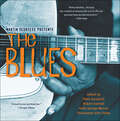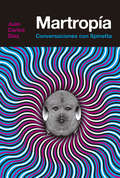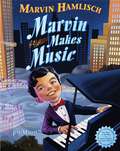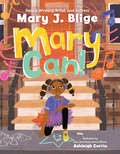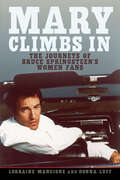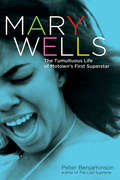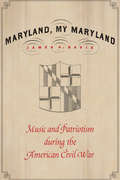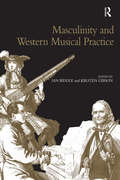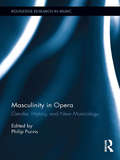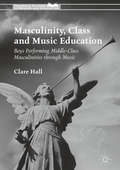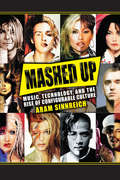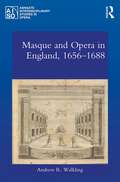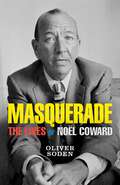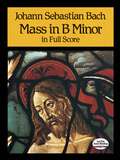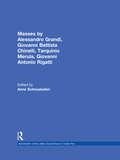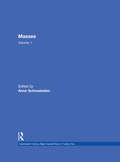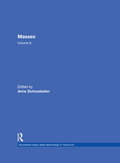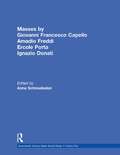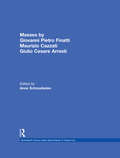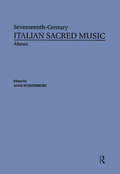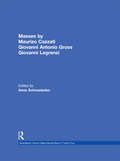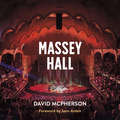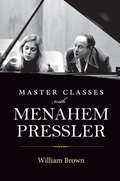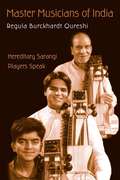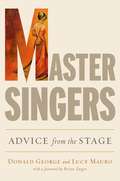- Table View
- List View
Martin Scorsese Presents The Blues: A Musical Journey
by Peter GuralnickA companion book to the PBS documentary series exploring the history of the blues and its contribution to American culture and music worldwide.A companion to the groundbreaking documentary series, this volume is a unique and timeless celebration of the blues, from writers and artists as esteemed and revered as the music that moved them.Included in this stunning collection are:Essays by David Halberstam, Hilton Als, Suzan-Lori Parks, Elmore Leonard, Luc Sante, John Edgar Wideman, and many othersTimeless archival pieces by writers such as Stanley Booth, Paul Oliver, and Mack McCormickEvocative color illustrations and rare vintage photographyIlluminating and in-depth conversations and portraits of musicians, ranging from Robert Johnson and Bessie Smith to John Lee Hooker and Eric ClaptonLyrics of legendary blues compositionsPersonal essays by the series directors Martin Scorsese, Charles Burnett, Richard Pearce, Wim Wenders, Marc Levin, Mike Figgis, and Clint EastwoodExcerpts from literary masters James Baldwin, Ralph Ellison, Eudora Welty, Zora Neale Hurston, Langston Hughes, and William FaulknerTracing the art form’s path from juke joints, house parties, and recording studios to musicians such as Elvis Presley, The Rolling Stones, and The Beatles, Martin Scorsese Presents The Blues proves, in the words of Willie Dixon, “The blues are the roots; every-thing else is the fruits.”Praise for Martin Scorsese Presents The Blues“Richly detailed . . . the book has a wealth of material with a lot of riffs and personal takes by talented writers.” —USA Today“A must-read for any blues fans.” —Chicago Tribune“Essential . . . for anyone who cares about American history, black culture, and current music.” —Miami Herald“Even if you’re a blues hound with hundreds of discs in your collection, this book is a learning experience, and richly enjoyable.” —Kansas City Star
Martropía: Conversaciones con Spinetta
by Juan Carlos DiezConvertido en un objeto de culto, este libro reúne incontables horas de conversaciones que durante cinco años mantuvieron el Flaco Spinetta y Juan Carlos Diez. El fruto de esos encuentros es esta hoja de ruta arbitraria que nos permite asomarnos al universo de este artista singular. Con más de treinta y cinco años de trayectoria y cerca de cuarenta discos grabados (en grupo o como solista), Luis Alberto Spinetta es sin lugar a dudas uno de los representantes más significativos de la música popular argentina. Creador de letras de hondo lirismo y compositor que abreva en las armonías del jazz y en la esencia melódica de Buenos Aires, Spinetta es también uno de los integrantes más destacados de esa generación mítica que dio vida al rock nacional. Sus influencias musicales, sus vivencias y sensaciones, sus obsesiones, su música y sus pensamientos sobre la realidad de hoy conviven con Castaneda y El Bosco, Jimi Hendrix y Los Beatles, Artaud y Bataille, Piazzolla y el capitán Beto. La discografía completa y una selección de letras de canciones, que incluye tres temas inéditos, integran esta obra ineludible para quienes quieran conocer en profundidad al artista y para todos aquellos que, conociéndolo, busquen reconocerse en su trayectoria. La crítica ha dicho... «Una suerte de mapa cósmico del universo de Spinetta.»Juan Rapacioli, Télam «Un libro destinado a conmover.»Cristian Vitale, Página/12 «Luis Alberto Spinetta fue un artista de notables condiciones que lo hicieron único. Martropía refleja esto con amplitud y especial sensibilidad.»Rodolfo García, músico e integrante de Almendra y Los Amigo. «En este preciso momento hay dos cosas muy importantes para hacer: una es escuchar algún temita de Luis Alberto y la otra leer estas conversaciones entre Juan Carlos y el propio Flaco.»Hugo Fattoruso «Llegué a casa y no pude parar de leerlo, lo devoré. Martropía es realmente profundo, abordando múltiples aspectos de la vida de Luis tanto en el plano personal como en lo referente a su obra.»Sergio Verdinelli, baterista de la banda de Spinetta
Marvin Makes Music
by Marvin HamlischA true story from one of America's most beloved composers Marvin loves to play the piano and compose his own songs. But performing music over and over that's composed by some old guys name Ludwig and Wolfgang just gives him knots in his stomach. When his father tells Marvin he has an audition with the most prestigious music school, how can Marvin overcome his nerves and get swept away by the music? This endearing book is based on the true life story of composer Marvin Hamlisch, who, at the age of six, was the youngest person ever accepted into the Juilliard School. Includes CD with original song
Mary Can!
by Mary J. BligeFrom multi-award-winning singer, artist, actress, and icon Mary J. Blige comes a fun and inspirational story that teaches young readers they can be anything, and they are enough.Most of the time, people say “no” or “you can’t” because they dream too small.Young Mary has been told that there are many things she can’t do. Like stay up past bedtime, or be an astronaut or become president. But what she really wants is to sing, and she isn’t about to let anyone tell her she can’t do it!A powerful motivating tale about a confident and ambitious girl who doesn’t feed into negativity, this debut children’s book from legendary artist Mary J. Blige proves that anyone can make their dreams come true by believing in themselves. It's a great conversation starter for overcoming discouragement from others.Brought to life with imaginative illustrations by Ezra Jack Keats Award-winning illustrator Ashleigh Corrin, Mary Can! is perfect for go-getters who aren’t afraid to be a YES in a world full of NOs.
Mary Climbs In: The Journeys of Bruce Springsteen's Women Fans
by Lorraine Mangione Donna LuffBruce Springsteen has been cherished by his fans for decades, from his early days playing high school gymnasiums through globally successful albums and huge stadium shows to solo performances in intimate theaters. As his long and illustrious career has evolved, the legendary devotion of his fans has remained a constant. Springsteen fans have become worthy of study in their own right, with books, memoirs, and even a movie documenting their passion and perspectives. But his fans are not monolithic, and surprisingly little attention has been paid to why so many women from across the world adore The Boss. Mary Climbs In illuminates this once overlooked but increasingly important and multi-faceted conversation about female audiences for Springsteen’s music. Drawing on unique surveys of fans themselves, the study offers insight into women’s experiences in their own voices. Authors Lorraine Mangione and Donna Luff explore the depth of women fans’ connection to Springsteen and the profound ways this connection has shaped their lives. Reflections from fans enliven each page as readers journey through the camaraderie and joy of concerts, the sorrow and confusion of personal loss and suffering, the love and closeness of community, and the search for meaning and for the self. Viewed through a psychological lens, women fans’ relationship with Springsteen is revealed in all its complexity as never before. Mary Climbs In is an important interdisciplinary contribution to the growing field of Springsteen studies and a must-read for any fan.
Mary Wells: The Tumultuous Life of Motown's First Superstar
by Peter BenjaminsonComplete with never-before-revealed details about the sex, violence, and drugs in her life, this biography reveals the incredibly turbulent life of Motown artist Mary Wells. Based in part on four hours of previously unreleased and unpublicized deathbed interviews with Wells, this account delves deeply into her rapid rise and long fall as a recording artist, her spectacular romantic and family life, the violent incidents in which she was a participant, and her abuse of drugs. From tumultuous affairs, including one with R&B superstar Jackie Wilson, to a courageous battle with throat cancer that climaxed in her gutsiest performance, this history draws upon years of interviews with Wells's friends, lovers, and husband to tell the whole story of a woman whose songs crossed the color line and whose voice captivated the Beatles.
Maryland, My Maryland: Music and Patriotism during the American Civil War
by James A. DavisHistorians have long treated the patriotic anthems of the American Civil War as colorful, if largely insignificant, side notes. Beneath the surface of these songs, however, is a complex story. “Maryland, My Maryland” was one of the most popular Confederate songs during the American Civil War, yet its story is full of ironies that draw attention to the often painful and contradictory actions and beliefs that were both cause and effect of the war. Most telling of all, it was adopted as one of a handful of Southern anthems even though it celebrated a state that never joined the Confederacy. In Maryland, My Maryland: Music and Patriotism during the American Civil War James A. Davis illuminates the incongruities underlying this Civil War anthem and what they reveal about patriotism during the war. The geographic specificity of the song’s lyrics allowed the contest between regional and national loyalties to be fought on bandstands as well as battlefields and enabled “Maryland, My Maryland” to contribute to the shift in patriotic allegiance from a specific, localized, and material place to an ambiguous, inclusive, and imagined space. Musical patriotism, it turns out, was easy to perform but hard to define for Civil War–era Americans.
Masculinity and Western Musical Practice
by Kirsten GibsonHow have men used art music? How have they listened to and brandished the musical forms of the Western classical tradition and how has music intervened in their identity formations? This collection of essays addresses these questions by examining some of the ways in which men, music and masculinity have been implicated with each other since the Middle Ages. Feminist musicologies have already dealt extensively with music and gender, from the 'phallocentric' tendencies of the Western tradition, to the explicit marginalization of women from that tradition. This book builds on that work by turning feminist critical approaches towards the production, rhetorical engagement and subversion of masculinities in twelve different musical case studies. In other disciplines within the arts and humanities, 'men's studies' is a well-established field. Musicology has only recently begun to address critically music's engagement with masculinity and as a result has sometimes thereby failed to recognize its own discursive misogyny. This book does not seek to cover the field comprehensively but, rather, to explore in detail some of the ways in which musical practices do the cultural work of masculinity. The book is structured into three thematic sections: effeminate and virile musics and masculinities; national masculinities, national musics; and identities, voices, discourses. Within these themes, the book ranges across a number of specific topics: late medieval masculinities; early modern discourses of music, masculinity and medicine; Renaissance Italian masculinities; eighteenth-, nineteenth- and early twentieth-century ideas of creativity, gender and canonicity; masculinity, imperialist and nationalist ideologies in the nineteenth century, and constructions of the masculine voice in late nineteenth- and twentieth-century opera and song. While the case studies are methodologically disparate and located in different historical and geographical locations, they all share a common conc
Masculinity in Opera (Routledge Research in Music #6)
by Philip PurvisThis book addresses the ways in which masculinity is negotiated, constructed, represented, and problematized within operatic music and practice. Although the consideration of masculine ontology and epistemology has pervaded cultural and sociological studies since the late 1980s, and masculinity has been the focus of recent if sporadic musicological discussion, the relationship between masculinity and opera has so far escaped detailed critical scrutiny. Operating from a position of sympathy with feminist and queer approaches and the phallocentric tendencies they identify, this study offers a unique perspective on the cultural relativism of opera by focusing on the male operatic subject. Anchored by musical analysis or close readings of musical discourse, the contributions take an interdisciplinary approach by also engaging with theatre, popular music, and cultural musicology scholarship. The various musical, theoretical, and socio-political trajectories of the essays are historically dispersed from seventeenth to twentieth- first-century operatic works and practices, visiting masculinity and the operatic voice, the complication or refusal of essentialist notions of masculinity, and the operatic representation of the ‘crisis’ of masculinity. This volume will not only enliven the study of masculinity in opera, but be an appealing contribution to music scholars interested in gender, history, and new musicology.
Masculinity, Class and Music Education: Boys Performing Middle-Class Masculinities through Music (Palgrave Studies in Gender and Education)
by Clare HallThis book offers a provocative sociological examination of masculinity, class and music education within the context of a unique and fascinating culture: the classical musical world of choirboys. The myriad cultural meanings embodied in the ‘boy voice’ are unravelled through compelling musical narratives of young choirboys, their mothers, and their teachers. The book investigates how boys negotiate dominant gender-class discourses and the various pedagogies involved in producing middle-class masculinities during primary school and early years contexts. Drawing on the theoretical resources of Bourdieu to develop the concept of ‘musical habitus’, the continued symbolic distinction of the choirboy is analysed in order to better understand how culture is simultaneously reproduced and evolving through music. This interdisciplinary work at the juncture of pedagogy and culture will appeal to social science researchers, educators and arts practitioners interested in the sociocultural dynamics of music.
Mashed Up: Music, Technology, and the Rise of Configurable Culture
by Aram SinnreichFrom ancient times to the present day, writers and thinkers have remarked on the unique power of music to evoke emotions, signal identity, and bond or divide entire societies, all without the benefit of literal representation. Even if we can't say precisely what our favorite melody means, we know very well what kind of effect it has on us, and on our friends and neighbors. According to Aram Sinnreich, this power helps to explain why music has so often been regulated in societies around the globe and throughout history. Institutional authorities ranging from dynastic China's "Office to Harmonize Sounds" to today's copyright collecting societies like BMI and ASCAP leverage the rule of law and the power of the market to make sure that some musical forms and practices are allowed and others are prohibited. Yet, despite the efforts of these powerful regulators, musical cultures consistently devise new and innovative ways to work around institutional regulations. These workarounds often generate new styles and traditions in turn, with effects far beyond the cultural sphere. Mashed Up chronicles the rise of "configurability," an emerging musical and cultural moment rooted in today's global, networked communications infrastructure. Based on interviews with dozens of prominent DJs, attorneys, and music industry executives, the book argues that today's battles over sampling, file sharing, and the marketability of new styles such as "mash-ups" and "techno" presage social change on a far broader scale. Specifically, the book suggests the emergence of a new ethic of configurable collectivism; an economic reunion of labor; a renegotiation of the line between public and private; a shift from linear to recursive logic; and a new "DJ consciousness," in which the margins are becoming the new mainstream. Whether these changes are sudden or gradual, violent or peaceful, will depend on whether we heed the lessons of configurability, or continue to police and punish the growing ranks of the mashed up.
Masque and Opera in England, 1656-1688 (Ashgate Interdisciplinary Studies in Opera)
by Andrew R. WalklingMasque and Opera in England, 1656–1688 presents a comprehensive study of the development of court masque and through-composed opera in England from the mid-1650s to the Revolution of 1688–89. In seeking to address the problem of generic categorization within a highly fragmentary corpus for which a limited amount of documentation survives, Walkling argues that our understanding of the distinctions between masque and opera must be premised upon a thorough knowledge of theatrical context and performance circumstances. Using extensive archival and literary evidence, detailed textual readings, rigorous tabular analysis, and meticulous collation of bibliographical and musical sources, this interdisciplinary study offers a host of new insights into a body of work that has long been of interest to musicologists, theatre historians, literary scholars and historians of Restoration court and political culture, but which has hitherto been imperfectly understood. A companion volume will explore the phenomenon of "dramatick opera" and its precursors on London’s public stages between the early 1660s and the first decade of the eighteenth century.
Masquerade: The Lives of Noël Coward
by Oliver Soden'This is the biography - truthful, sympathetic and thorough - that Coward deserves'DAILY TELEGRAPHThe voice, the dressing-gown, the cigarette in its holder, remain unmistakable. There is rarely a week when one of Private Lives, Hay Fever, and Blithe Spirit is not in production somewhere in the world. Phrases from Noël Coward's songs - "Mad About The Boy", "Mad Dogs and Englishman" - are forever lodged in the public consciousness. He was at one point the most highly paid author in the world. Yet some of his most striking and daring writing remains unfamiliar. As T.S. Eliot said, in 1954, "there are things you can learn from Noël Coward that you won't learn from Shakespeare".Coward wrote some fifty plays and nine musicals, as well as revues, screenplays, short stories, poetry, and a novel. He was both composer and lyricist for approximately 675 songs. Louis Mountbatten's famous tribute argued that, while there were greater comedians, novelists, composers, painters and so on, only "the master" had combined fourteen talents in one. So central was he to his age's theatre that any account of his career is also a history of the British stage. And so daring was Coward's unorthdoxy in his closest relationships, obliquely reflected throughout his writing, that it must also be a history of sexual liberation in the twentieth century. In Oliver Soden's sparkling, story-packed new Life, the Master finally gets his due.
Mass in B Minor in Full Score (Dover Choral Music Scores)
by Johann Sebastian BachThe crowning glory of Bach's lifework in the field of sacred music and a universal statement of Christian faith, reprinted from the authoritative Bach-Gesellschaft edition. Includes translation of text.
Masses by Alessandro Grandi, Giovanni Battista Chinelli, Giovanni Rigatti, Tarquinio Merula (Seventeenth Century Italian Sacred Music in Twenty Five)
by Anne SchnoebelenThe purpose of this series is to provide a large repertory 17th century Italian sacred music in clear modern editions that are both practical and faithful to the original sources.
Masses by Gasparo Villani, Alessandro Grandi, Pietro Lappi, and Benivoglio Lev (Seventeenth Century Italian Sacred Music in Twenty Five)
by Anne SchnoebelenThe purpose of this series is to provide a large repertory 17th century Italian sacred music in clear modern editions that are both practical and faithful to the original sources.
Masses by Giovanni Andrea Florimi, Giovanni Francesco Mognossa, and Bonifazio Graziani (Seventeenth Century Italian Sacred Music in Twenty Five #Vol. 8)
by Anne SchnoebelenThe purpose of this series is to provide a large repertoiry of 17th century Italian sacred music in clear modern editions that are both practical and faithful to the original sources.
Masses by Giovanni Francesco Capello, Bentivoglio Lev, and Ercole Porta (Seventeenth Century Italian Sacred Music in Twenty Five)
by Anne SchnoebelenThe purpose of this series is to provide a large repertory 17th century Italian sacred music in clear modern editions that are both practical and faithful to the original sources.
Masses by Giovanni Pietro Finatti, Maurizio Cazzati, Giulio Cesare Arresti (Seventeenth Century Italian Sacred Music in Twenty Five #Vol. 6)
by Anne SchnoebelenThe purpose of this series is to provide a large repertory 17th century Italian sacred music in clear modern editions that are both practical and faithful to the original sources.
Masses by Giovanni Rovetta, Ortensio Polidori, Giovanni Battista Chinelli, Orazio Tarditi (Seventeenth Century Italian Sacred Music in Twenty Five)
by Anne SchnoebelenThe purpose of this series is to provide a large repertory 17th century Italian sacred music in clear modern editions that are both practical and faithful to the original sources.
Masses by Maurizio Cazzati, Giovanni Antonio Grossi, Giovanni Legrenzi (Seventeenth Century Italian Sacred Music in Twenty Five #7)
by Anne SchnoebelenThe purpose of this series is to provide a large repertory 17th century Italian sacred music in clear modern editions that are both practical and faithful to the original sources.
Massey Hall: An Enduring Legacy
by David McPhersonThe fascinating story of Canada’s most revered concert hall and the myriad artists who have graced its stage.Known for its intimacy and sense of occasion, a night at Toronto’s Massey Hall is magical for both audiences and performers. For many musicians, playing the hall is the surest sign that they have made it. Looking out over the crowd, performers often comment that they feel they have joined history as they stand on the stage where Sarah Vaughan, Miles Davis, Bob Dylan, and so many other legends have stood.Based on scores of interviews and meticulous research, Massey Hall chronicles not only the historical and musical moments of the past 127 years, but also the community of artists and supporters that has built up around the hall. Covering both emerging artists such as Shakura S’Aida and William Prince and musical giants from Herbie Hancock to the Tragically Hip, this full-colour book is a celebration of music, community, and our shared cultural heritage.
Master Classes with Menahem Pressler
by William BrownMenahem Pressler is a world-renowned piano soloist, master class teacher, and member of the acclaimed Beaux Arts Trio. In this companion to his first book, Menahem Pressler: Artistry in Piano Teaching, Pressler’s former student William Brown brings together Pressler’s teachings on an additional 37 piano masterworks by Johann Sebastian Bach, Samuel Barber, Ludwig van Beethoven, Johannes Brahms, Frédéric Chopin, Claude Debussy, George Frideric Handel, Franz Joseph Haydn, Franz Liszt, Felix Mendelssohn, Wolfgang Amadeus Mozart, Sergei Prokofiev, Sergei Rachmaninoff, Maurice Ravel, Franz Schubert, and Robert Schumann. With over 200 musical examples and measure-by-measure lessons on masterpieces of the piano repertoire as well as instructions on phrasing, fingering, imagery, dynamic contrasts, pianistic touches, articulation, and practice drills, pianists of all levels will benefit from Pressler’s expertise.
Master Musicians of India: Hereditary Sarangi Players Speak
by Regula Burckhardt QureshiBeginning with Ravi Shankar and Ali Akbar Khan, Indian art music is renowned internationally for its improvised raga performance. This ancient tradition has for centuries been transmitted orally within the seclusion of hereditary families. Few such families remain today, and not enough is known about their central contribution to the life of Indian music. Master Musicians of India reveals this rich world through profiles and interviews of key musicians from this tradition.
Master Singers: Advice From the Stage
by Donald George Lucy MauroThe book provides vocalists making the transition from student to professional with advice on matters ranging from technique and its practical application for effective stage projection to the practicalities of the business of professional singing.
